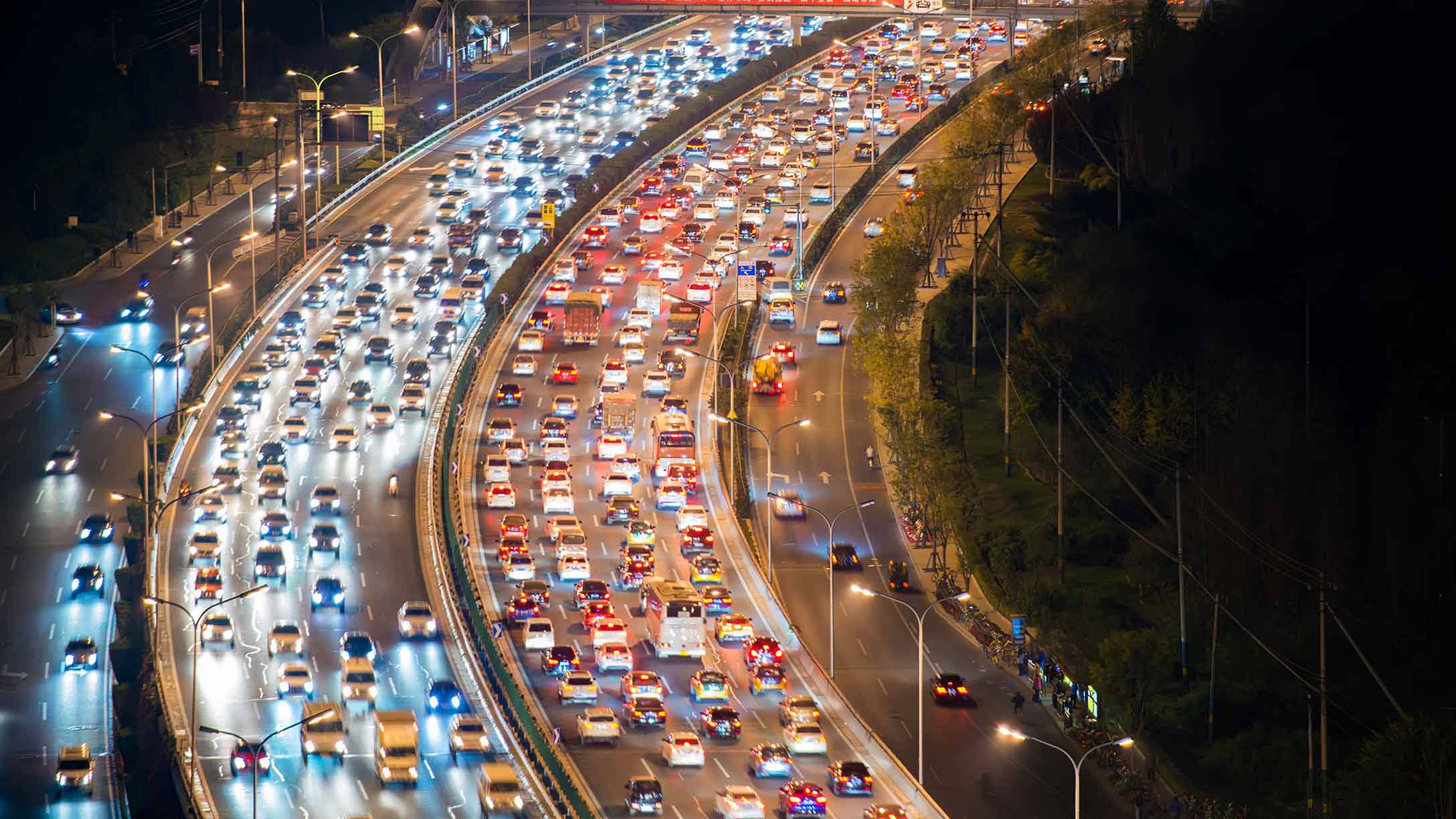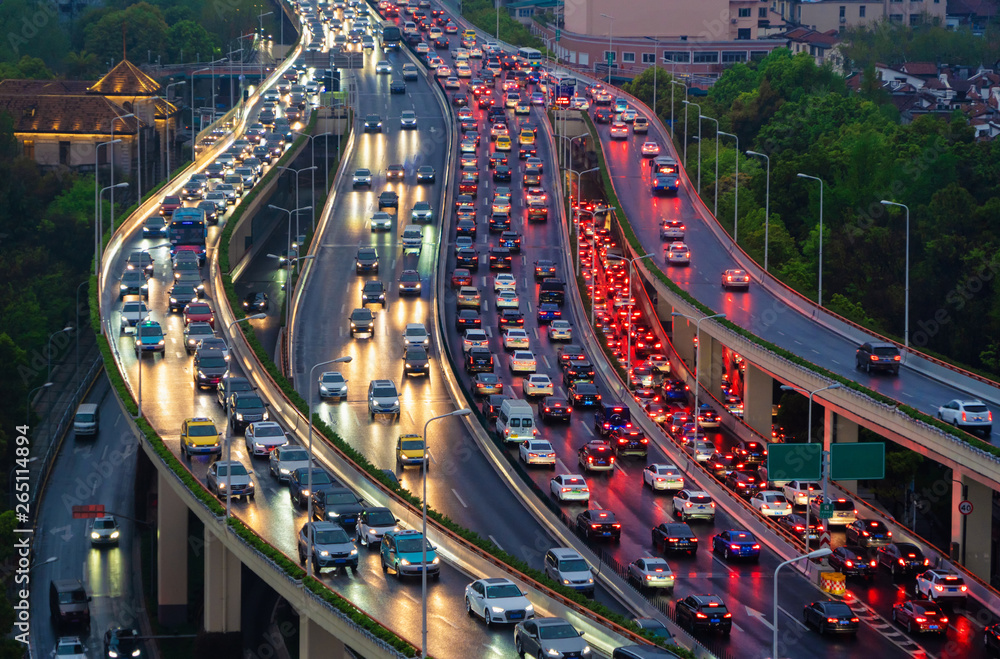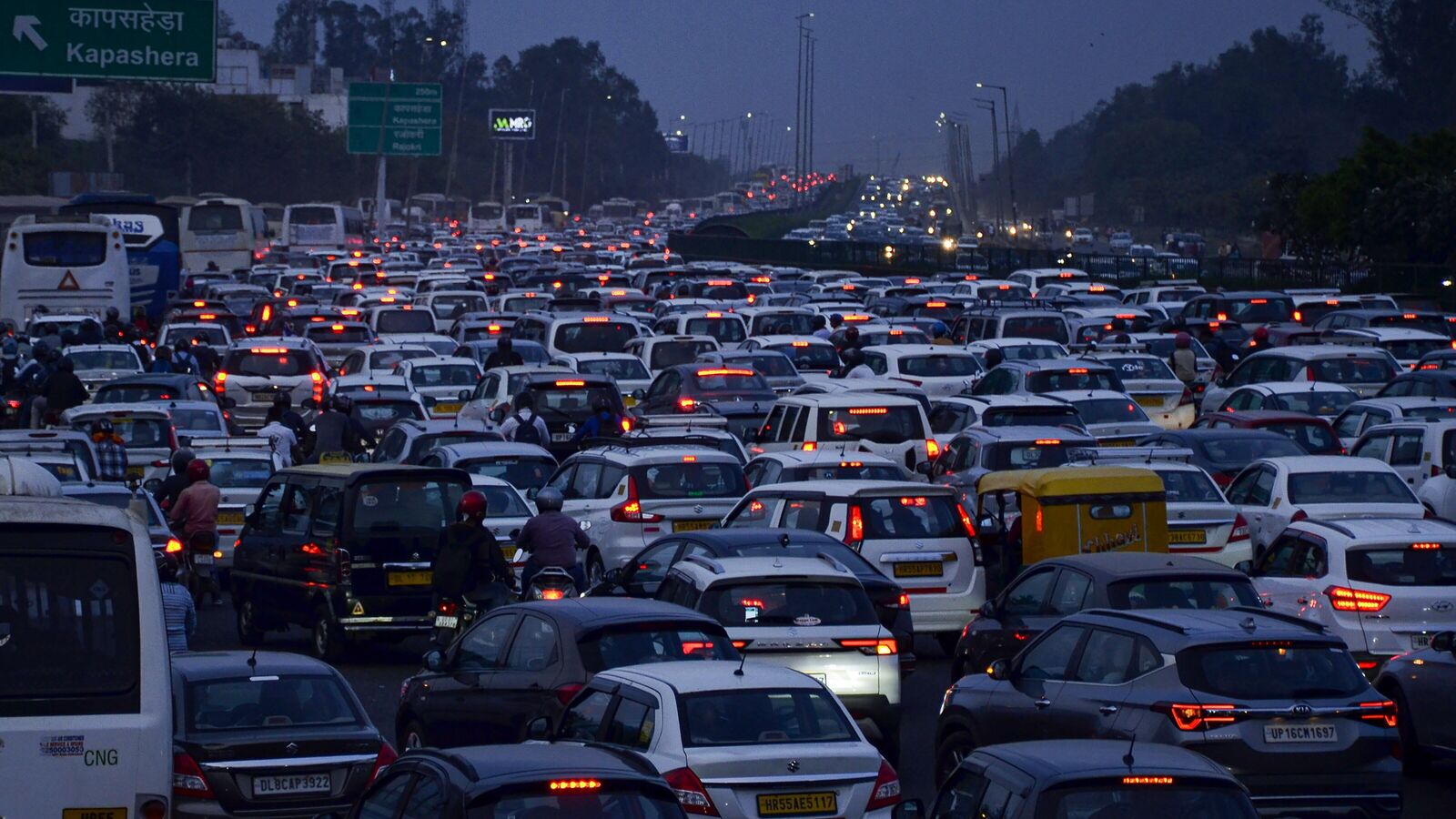Navigating Chicago's Gridlock: Your Guide To Smarter Drives
For anyone who has ever attempted to drive into the heart of the Windy City, the phrase "traffic into Chicago" likely conjures images of endless brake lights, honking horns, and the slow crawl of vehicles. It's a daily reality for millions of commuters, visitors, and delivery drivers alike. Understanding the dynamics of this urban circulatory system, from its major arteries to its hidden shortcuts, is not just a convenience—it's a necessity for maintaining sanity and punctuality. The sheer volume of vehicles, combined with the city's unique layout and ever-present construction, creates a complex web of congestion that demands strategic navigation. But what if there were ways to outsmart the gridlock, to anticipate the slowdowns, and to find clearer paths to your destination? This article delves into the strategies, tools, and insights that can transform your experience of driving into Chicago, making it less of a headache and more of a manageable journey.
The challenge of managing traffic into Chicago isn't unique to this metropolis; major cities worldwide grapple with similar issues. However, Chicago's position as a central hub for commerce, tourism, and transportation amplifies these challenges. From the bustling expressways like the Dan Ryan, Kennedy, and Eisenhower, to the intricate network of city streets, every route presents its own set of variables. The key to successful navigation lies in harnessing real-time information and understanding the various factors that influence traffic flow. By leveraging modern technology and adopting proactive planning, drivers can significantly mitigate the impact of congestion, transforming their daily commute or occasional visit into a smoother, more predictable experience.
Table of Contents
- Understanding the Beast: The Challenge of Traffic into Chicago
- The Digital Eye: How Traffic Cameras Aid Navigation
- Decoding the Roads: Real-Time Traffic Maps and Symbols
- Beyond the Snapshot: Leveraging Live Data for Trip Planning
- The Power of Preparation: Avoiding Congestion Hotspots
- Essential Tools for the Urban Commuter
- The Role of Public and Private Services in Traffic Management
- Looking Ahead: Future Innovations for Chicago Traffic
Understanding the Beast: The Challenge of Traffic into Chicago
The sheer scale of traffic into Chicago is daunting. As a major economic hub, Chicago draws in commuters from vast suburban areas, not to mention the constant flow of commercial vehicles and inter-state travelers. The city's grid system, while seemingly simple, becomes a labyrinth when confronted with peak hour volumes, special events, and unexpected incidents. Factors contributing to the notorious congestion include:- High Population Density: Millions reside in and around the metropolitan area, all vying for road space.
- Major Transportation Hub: Chicago is a critical nexus for air, rail, and road transport, increasing transient traffic.
- Infrastructure Limitations: Despite ongoing improvements, the road network struggles to keep pace with demand. Bottlenecks are common, especially at major interchanges.
- Construction Zones: "The only two seasons in Chicago are winter and construction," as the saying goes. Road work is a perpetual factor impacting traffic flow.
- Special Events: Sporting events, concerts, conventions, and festivals frequently close roads or cause massive surges in vehicle and pedestrian traffic.
- Weather Conditions: Chicago's diverse weather, from heavy snow to torrential rain, significantly impacts visibility, road conditions, and driver behavior, leading to increased accidents and slower speeds.
The Digital Eye: How Traffic Cameras Aid Navigation
One of the most powerful tools in a driver's arsenal for understanding traffic into Chicago is the network of traffic cameras. While the specific examples might come from other regions, the principle remains universal: these cameras provide invaluable visual data that traditional maps simply cannot. Imagine being able to see, with your own eyes, whether that "heavy traffic" alert truly means a standstill or just slow-moving vehicles. This visual confirmation is crucial for making informed decisions on the fly.From Single Snapshots to Continuous Feeds
The data provided by various state transportation departments, like those in Kentucky and Nevada, highlights the utility of these cameras. "Each camera provides a single snapshot of current traffic conditions," and "Only the current image is displayed." This concept of a dynamic, frequently updated image is fundamental. While a single snapshot offers a moment-in-time view, the cumulative effect of having access to numerous cameras across key routes leading into Chicago allows drivers to piece together a comprehensive picture. Services that "Access Erlanger traffic cameras on demand with WeatherBug" or allow you to "Choose from several local traffic webcams across Erlanger, KY" demonstrate the demand for such real-time visual information. For Chicago, similar systems are in place, often managed by the Illinois Department of Transportation (IDOT) or the Chicago Department of Transportation (CDOT), offering live feeds from critical expressways and intersections. Being able to "Live stream all Erlanger traffic cameras in the state of KY" (as mentioned in the data) illustrates the ideal scenario for Chicago drivers: a centralized portal to view key choke points and alternative routes, empowering them to "Avoid traffic & plan ahead!"Decoding the Roads: Real-Time Traffic Maps and Symbols
Beyond static images, interactive web maps are the backbone of modern traffic management. These maps translate complex real-world conditions into easily digestible visual cues. Understanding what these colors and lines mean is paramount for anyone trying to navigate traffic into Chicago efficiently.Interpreting Road Status Indicators
The "Erlanger traffic map traffic flow lines" provide a clear example of standardized visual language:- Red lines = heavy traffic flow: This universally signals significant congestion, often stop-and-go.
- Yellow/orange lines = moderate traffic: Indicates slower speeds but generally moving traffic.
- Green lines = clear traffic: The ideal scenario, signifying free-flowing conditions.
- Red/white dashed lines = closed road: A critical alert, indicating a complete blockage.
- Grey/white dashed lines = road work: Warns of potential slowdowns due to construction.
Beyond the Snapshot: Leveraging Live Data for Trip Planning
The goal of all this real-time data is to enable proactive trip planning. It's about moving beyond simply reacting to traffic and instead anticipating and avoiding it. The "Data Kalimat" emphasizes functionalities like "Step by step directions for your drive or walk," "Easily add multiple stops," and "see live traffic and road conditions." These are not just features; they are essential strategies for anyone regularly encountering traffic into Chicago. Modern mapping applications go far beyond simple A-to-B directions. They integrate real-time traffic data, accident reports, and even predictive analytics to suggest the optimal route at any given moment. This means that if a major accident occurs on the Kennedy Expressway, your navigation app can immediately reroute you via surface streets or suggest an alternative expressway, saving you hours of frustration. The ability to "plan trips" and "view satellite, aerial and street side imagery" (as mentioned with Bing Maps) adds another layer of contextual awareness, allowing drivers to visualize their surroundings and potential alternative paths even before they encounter them. This proactive approach is key to mitigating the stress and delays associated with heavy traffic into Chicago.The Power of Preparation: Avoiding Congestion Hotspots
Preparation is paramount when tackling traffic into Chicago. This involves not just checking traffic before you leave, but also understanding typical congestion patterns and peak times. For instance, the morning rush hour (roughly 6:00 AM - 9:00 AM) and evening rush hour (3:00 PM - 7:00 PM) are almost guaranteed to see heavy traffic on all major expressways leading into and out of the city. Weekends can also bring significant congestion, especially if there are major events downtown or at McCormick Place. By using tools that "Provide up to the minute traffic and transit information," drivers can identify and often circumvent these hotspots. For example, if the Dan Ryan is showing severe delays, a prepared driver might opt for a combination of Metra rail service and a rideshare, or explore alternative surface street routes like Ashland Avenue or Western Avenue, even if they seem longer on a static map. The "Date time type location city/county roadway status callid" information, often available from official transportation departments, provides granular details about incidents, allowing drivers to understand the nature of a delay and estimate its duration. This level of detail empowers drivers to make strategic decisions, whether it's delaying their departure, choosing public transit, or taking a less conventional route to avoid the worst of the traffic into Chicago.Essential Tools for the Urban Commuter
In today's digital age, a range of applications and websites have become indispensable for anyone navigating traffic into Chicago. These tools aggregate data from various sources, including traffic cameras, GPS-enabled devices, and official reports, to provide a comprehensive view of road conditions.Mapping Your Way with Precision
Services like "Bing Maps" and the "Official MapQuest website" are prime examples of platforms that offer "driving directions, maps, live traffic updates and road conditions." They allow users to "Map multiple locations," which is particularly useful for complex urban trips involving several stops. Beyond just showing traffic, many of these tools also help you "Find nearby businesses, restaurants and hotels," which can be invaluable if you find yourself stuck in unexpected traffic and need to pull over or find amenities. The integration of "satellite, aerial and street side imagery" also provides a rich visual context, helping drivers orient themselves and identify landmarks, which is especially helpful when navigating unfamiliar areas of Chicago. These platforms are constantly evolving, incorporating predictive traffic modeling and user-generated incident reports to provide increasingly accurate and timely information, making the experience of driving into Chicago more manageable.The Role of Public and Private Services in Traffic Management
Effective management of traffic into Chicago is a collaborative effort between government agencies and private technology companies. State Departments of Transportation (DOTs), like the Illinois Department of Transportation (IDOT), play a crucial role. They operate and maintain the vast network of roads, bridges, and traffic signals, and are responsible for disseminating official traffic alerts. The "Nevada Department of Transportation (NDOT) 511 page" mentioned in the data is an excellent example of a public service providing "up to the minute traffic and transit information for Nevada," including "real time traffic map with travel times, traffic accident details, traffic cameras and other road conditions." Illinois has similar 511 services that are vital for getting official, verified information about road closures, major accidents, and construction affecting traffic into Chicago. Private companies, on the other hand, leverage this public data, combine it with crowd-sourced information (from millions of smartphone users), and apply advanced algorithms to offer predictive traffic analysis and alternative routing. This symbiotic relationship ensures that drivers have access to both authoritative and highly dynamic information.Weather's Impact on Traffic Flow
One significant factor that often gets overlooked until it hits is the weather. "For general weather forecast visit National Weather Service" is a crucial piece of advice for any driver, especially when heading into a city like Chicago known for its unpredictable climate. Heavy rain can reduce visibility and create slick conditions, leading to more accidents and slower speeds. Snow and ice can bring the city to a near standstill, making even short commutes excruciatingly long. High winds can affect bridge crossings and large vehicles. By checking the weather forecast in conjunction with traffic reports, drivers can anticipate adverse conditions and adjust their plans accordingly, perhaps opting for public transportation or delaying their trip to avoid the worst of the weather-induced traffic into Chicago.Looking Ahead: Future Innovations for Chicago Traffic
The challenge of managing traffic into Chicago is ongoing, but so is the innovation aimed at alleviating it. Future developments will likely focus on even greater integration of data, smarter infrastructure, and autonomous technologies.- Smart Traffic Signals: Adaptive signal systems that adjust timing based on real-time traffic flow can significantly improve efficiency at intersections.
- Connected Vehicles: Cars that communicate with each other and with infrastructure can provide hyper-local traffic warnings and coordinate movements to reduce congestion.
- Predictive Analytics: Advanced AI and machine learning models will become even better at forecasting traffic patterns, not just reacting to them, allowing for more proactive rerouting.
- Integrated Mobility Solutions: Seamless integration of public transit, ride-sharing, biking, and walking options will offer more viable alternatives to driving, reducing overall vehicle volume.
- Dynamic Lane Management: Reversible lanes or variable speed limits based on real-time conditions can optimize traffic flow on major arteries.
Conclusion
Navigating traffic into Chicago is undeniably a challenge, but it's a challenge that can be met with preparation, awareness, and the intelligent use of available tools. We've explored how real-time traffic cameras offer visual insights, how color-coded maps simplify complex road conditions, and how comprehensive mapping services empower drivers to plan multi-stop journeys with precision. We've also highlighted the critical roles of both public transportation agencies and private tech companies in providing the data necessary to make informed decisions, and the often-underestimated impact of weather on road conditions. The key takeaway is clear: don't just drive into Chicago blindly. Leverage the vast array of real-time information and planning tools at your disposal. By doing so, you can transform your commute or visit from a frustrating ordeal into a far more predictable and less stressful experience. What are your go-to strategies for tackling Chicago traffic? Share your tips and tricks in the comments below, or explore our other articles for more insights into urban navigation and travel!- Liz Hurley
- Nikki Yarrow
- Emmychanel Onlyfans
- Best Leaked Snapchat Nudes
- Lindafromtheplayroom Onlyfans

What Causes Traffic Congestion? | Geotab

Traffic jam in the rush hour on highway. Cars on bridges and roads in

Massive traffic congestion continues in Delhi due to closure of key